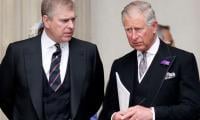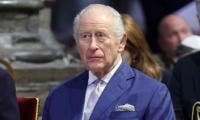LONDON: Global demand for oil is likely to moderate this year, as the price of crude nears $80 a barrel and many key importing nations no longer offer consumers generous fuel subsidies, the International Energy Agency said on Wednesday.
The Paris-based IEA cut its forecast for global demand growth to 1.4 million barrels per day for 2018, from a previous estimate of 1.5 million bpd.
Oil has risen 51 percent in the last year, driven by coordinated supply cuts and, this month, by concern over Iranian supply after the United States said it would reimpose sanctions on Tehran over its nuclear activities. "It would be extraordinary if such a large jump did not affect demand growth, especially as end-user subsidies have been reduced or cut in several emerging economies in recent years," the IEA said.
Oil inventories in the world´s richest nations, the most transparent and easy to track, have now fallen 1 million barrels below the five-year average, the level targeted by the Organization of the Petroleum Exporting Countries and its partners, as the group restrains crude output for a second year.
"For now, the rapidly changing geopolitical landscape will move the attention away from stocks as producers and consumers consider how to limit volatility in the oil market," the IEA said. "For its part, the IEA will monitor developments closely and is ready to act if necessary to ensure that markets remain well supplied."
Iran, which produces around 3.8 million bpd and is OPEC´s third-largest supplier behind Saudi Arabia and Iraq, could face severe disruption to its exports. The IEA said the previous round of sanctions, which were lifted in early 2016, cut Iran´s crude exports by more than 1 million bpd. "It is too soon to say what will happen this time, but we should examine whether other producers could step in to ensure an orderly flow of oil to the market and offset a disruption to Iranian exports," the agency said. Iran exported 2.6 million bpd of crude in April, according to the oil ministry´s news agency SHANA.
The IEA estimates demand for OPEC´s crude will average 32.25 million bpd for the rest of 2018, compared with output of 32.12 million bpd in April.
World supply, meanwhile, rose 1.78 million bpd in April from a year earlier, driven predominantly by non-OPEC production. Economic crisis has driven Venezuelan production to its lowest in years, while natural decline in Mexico cut production by 175,000 bpd in April, down 8 percent year-on-year, the largest fall for any non-OPEC producer. Record output from the United States pushed non-OPEC supplies up by 2.1 million bpd year-on-year to 59.4 million bpd. Production elsewhere outside OPEC was flat to lower, the IEA said, noting declines in the North Sea and Brazil. The IEA, which advises Western governments on energy policy, expects non-OPEC supply to rise by 1.87 million bpd in 2018, up from a previous forecast of 1.8 million bpd.
OPEC, however, sees oil´s rally towards $80 a barrel as a short-term spike driven by geopolitics rather than any supply shortage, four OPEC delegates said, a sign the group is not rushing yet to rethink its supply-cutting agreement. The view of top exporter Saudi Arabia is that any brief, speculator-driven jump in oil prices is not sufficient grounds for producers to boost output, an OPEC source familiar with the kingdom´s thinking said.
The four OPEC delegates said the latest rise in prices stemmed more from concern about U.S.
sanctions on Iran and tension in the Middle East, rather than a suddenly tighter balance between oil supply and demand.
"Prices are high just because of the tensions," one of the OPEC delegates, who declined to be identified, said.
Since last year, oil has been supported by a deal by the Organization of the Petroleum Exporting Countries, plus Russia and other non-members, to cut output.Prices have risen about 40 percent since the accord began in January 2017.
Prices could rally further before declining, according to some in OPEC.
"It may exceed $80 and then go down," one of the sources said. In any case, the extent of the rally has yet to cause any real concern. "Not yet," said another delegate, asked whether oil at $79 was too high. U.S. President Donald Trump last month accused OPEC of "artificially" boosting prices, putting pressure on producers to cool the market and in turn drawing a rebuke from some OPEC members.
OPEC and its allies are cutting production by about 1.8 million barrels per day, almost 2 percent of world supply, until the end of 2018.
Oil ministers meet on June 22-23 to review the policy. The producers´ original goal was to reduce oil inventories to the five-year average.















